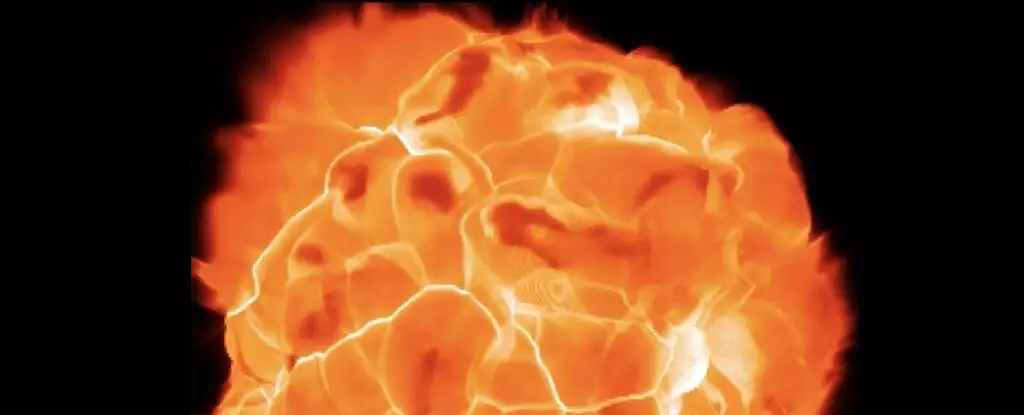Astronomy enthusiasts have long been fascinated by Betelgeuse, also known as Beetle-juice. Situated prominently in the constellation of Orion, this red supergiant star has captured the attention of stargazers around the world. With a radius approximately 1,000 times that of the Sun, Betelgeuse shines brightly in the night sky, emitting about 100,000 times more light than our own star. However, in recent years, Betelgeuse has garnered even more interest due to its unexpected dimming, raising questions about the underlying mechanisms at play.
The sudden dimming of Betelgeuse, also referred to as “The Great Dimming,” began towards the end of 2019 and returned to normalcy by the first half of 2020. This perplexing phenomenon sparked speculation and led to further investigation by astronomers seeking to unravel the mystery behind Betelgeuse’s variable behavior. Ground-based images of the constellation of Orion, as well as observations from the Hubble Space Telescope, have provided invaluable insights into the complexities of this enigmatic star.
A Companion Star Theory
A recent paper published on Betelgeuse has put forth an intriguing theory – the presence of a companion star could be responsible for the star’s unusual variability. According to the study, a companion star with 1.17 solar masses orbiting Betelgeuse at a distance of 2.43 times the star’s radius could lead to the modulation of dust in the region, thereby causing the observed variations in brightness. This hypothesis opens up new possibilities for understanding the underlying mechanisms driving Betelgeuse’s complex behavior.
The Long Secondary Period Mystery
One of the most notable features of Betelgeuse is its Long Secondary Period (LSP) of approximately 2,100 days. This secondary cycle, which is common among stars in the Red Giant Branch, remains a source of intrigue for astronomers. While the exact cause of the LSP remains unknown, it is believed to be linked to the pulsation of the star’s outer layers. If this hypothesis holds true, it could indicate that Betelgeuse is larger than previously estimated, potentially leading to a supernova event in the coming centuries.
In a surprising twist, researchers have proposed that a low mass companion star, Ori B, could be the key to understanding Betelgeuse’s long-term variability. This binary star system, if confirmed, could explain the observed fluctuations in brightness attributed to dust modulation during the companion star’s transits. This new perspective challenges previous assumptions about Betelgeuse’s imminent supernova and suggests that further observations and research are needed to fully comprehend the complexities of this red supergiant.
As astronomers continue to study Betelgeuse and unravel its mysteries, one thing remains certain – the enigmatic red supergiant will continue to captivate and intrigue both amateur and professional stargazers for years to come. The unique characteristics and behaviors of Betelgeuse offer a glimpse into the vast and complex universe, reminding us of the ongoing quest for knowledge and understanding in the field of astronomy.


Leave a Reply